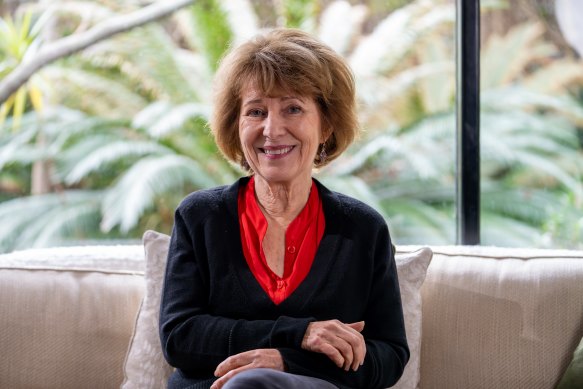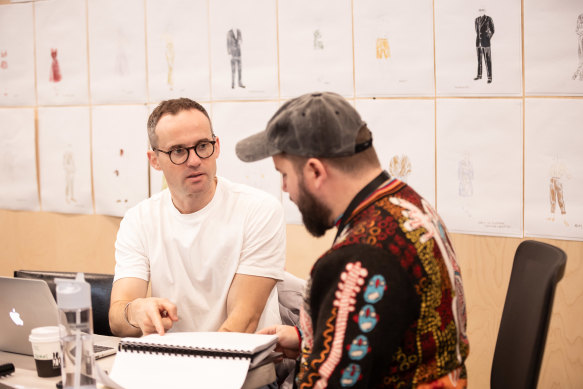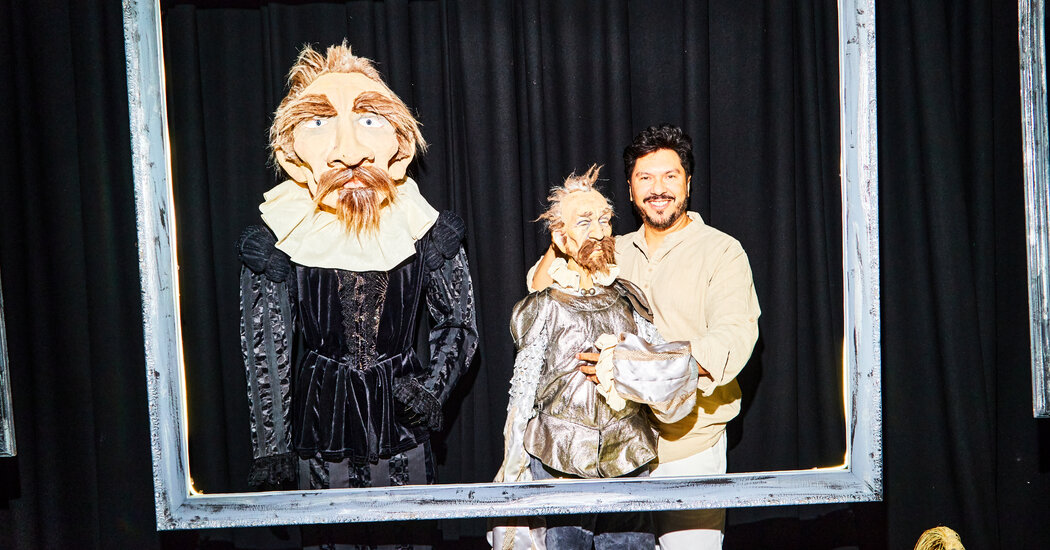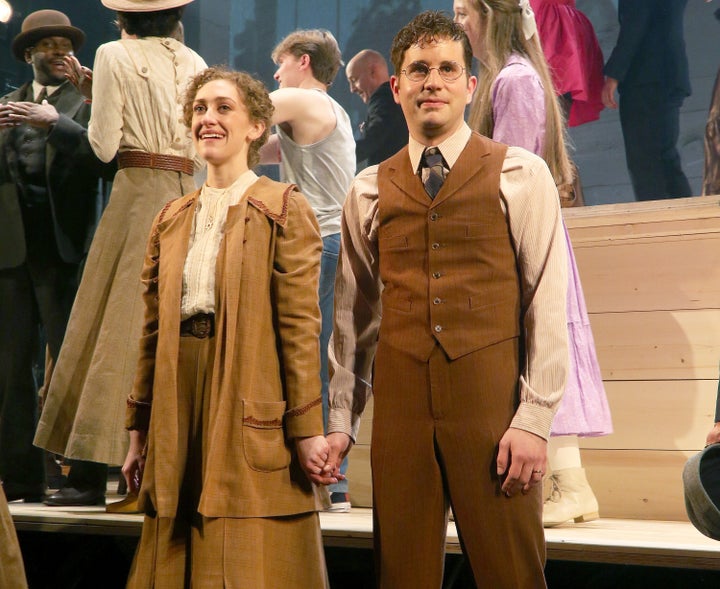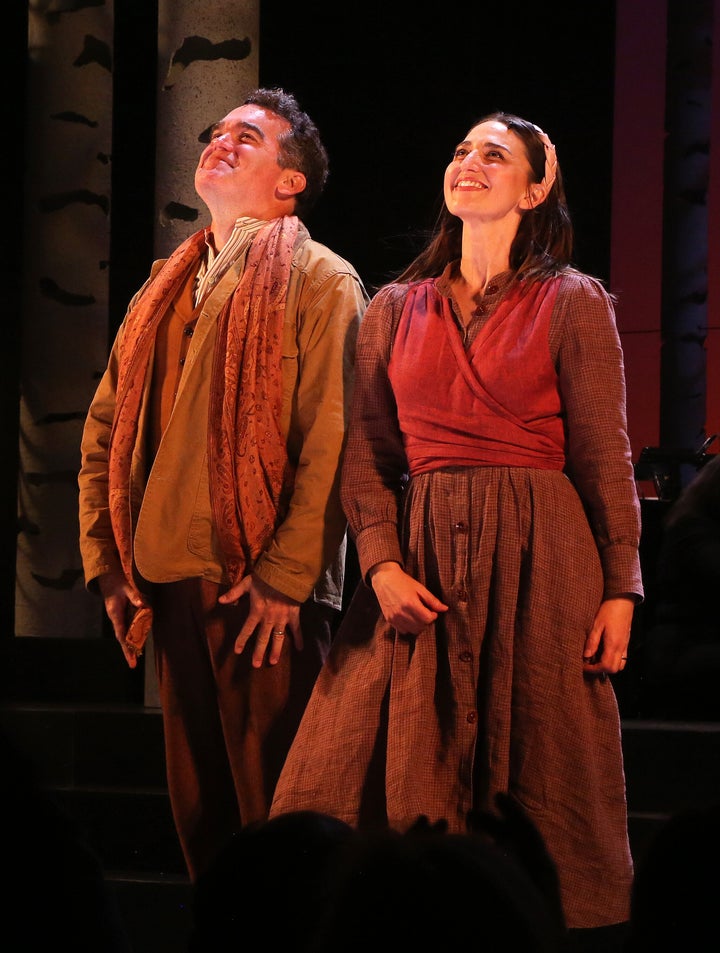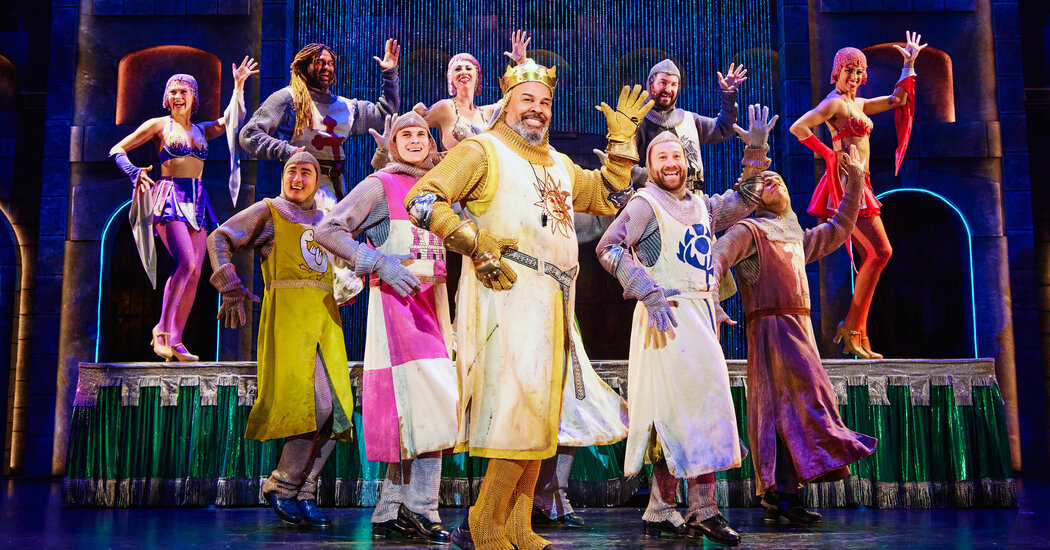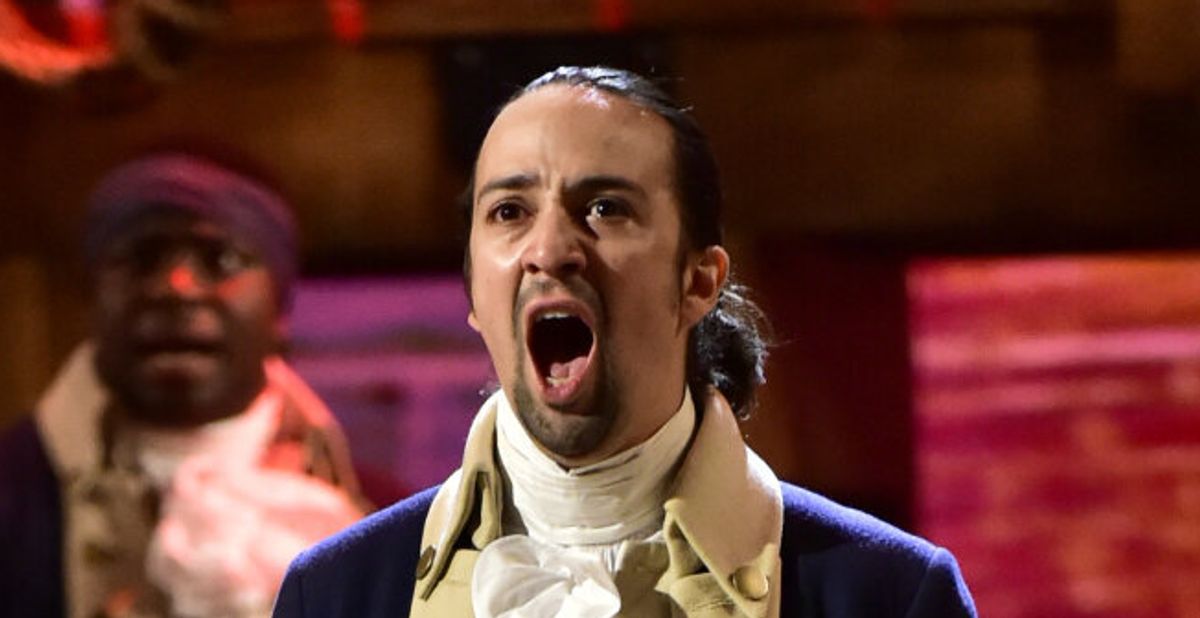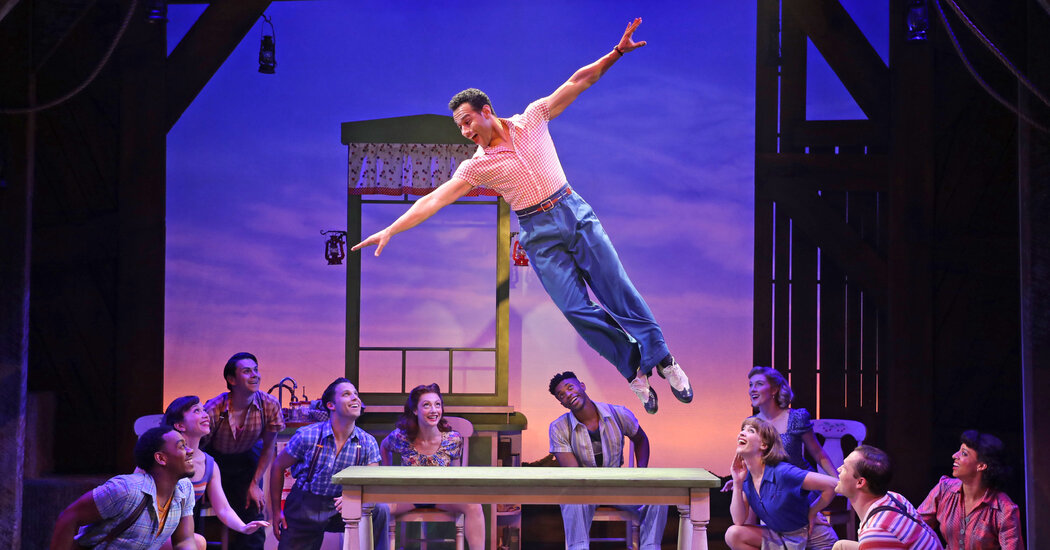‘A Eulogy for Roman’ Review: Farewell to a Friend, With Help From the Audience
[ad_1]
Delivering a eulogy is never easy at the best of times, and it’s an especially tough slog for Milo, whose best friend, Roman, has recently died. The pair had been close since childhood, and Milo, who is in his early 20s, appears especially shaken. It quickly becomes obvious that he will need a supportive hand from those attending the service.
And that means us, the audience members at Peter Charney and Brendan George’s “A Eulogy for Roman,” a modest but sneakily affecting show that just opened at 59E59 Theaters.
It is not long before we are roped into helping the flustered Milo (played by George, a graduate student at New York University who also wrote the play). He asks a theatergoer to help him sort index cards on which he has scribbled some thoughts about Roman. Then he wonders if anyone can share tips for dealing with loss. “Dogs,” a woman volunteered at the performance I attended.
Of course, Milo’s gentle prompts serve to move around the show’s emotional building blocks, but he is such a charming presence that it feels as though he is including the theatergoers in a conversation rather than simply manipulating them to serve his storytelling needs.
There is a bit of unease, however, as Milo’s emotion is decidedly self-centered — he doesn’t tell us anything very revealing about Roman. Then again, isn’t part of the grieving process the act of figuring out how one continues to live?
To overcome his disarray, Milo decides to complete a project he had embarked on with Roman: getting through a “Life Points List,” a lengthy catalog of experiences “that would remind us that we are alive and make us feel alive.” A few of them still hadn’t been checked off when Roman died, and perhaps, Milo suggests, the memorial-goers might want to help him achieve closure. The remaining tasks include suggesting songs for a playlist (my fellow audience members spontaneously latched onto a candy theme) and teaming up with Milo to do 100 push-ups. As amusing as those scenes are, they can feel like activities at a children’s birthday party, even if the show tends to stay on the right side of that dangerous line.
The use of a list as a way to deal with death, combined with audience participation, brings to mind Duncan Macmillan and Jonny Donahoe’s hit play “Every Brilliant Thing,” though “A Eulogy for Roman” does not weave the more discomforting sides of our existence into its fabric as effectively as that show did.
Still, George has an endearing presence and Charney, who is credited with concept and direction, moves the action along at a steady pace. And there is something refreshing about the show’s commitment to earnestness. We have been so conditioned to expect a certain degree of cynicism that I spent a good portion of the evening wondering when we were going to discover that Roman or Milo or both were psychopaths. But no: The bravest thing about “A Eulogy for Roman” is its embrace of kindness, resilience and community.
A Eulogy for Roman
Through Sept. 3 at 59E59 Theaters, Manhattan; 59e59.org. Running time: 1 hour 15 minutes.
[ad_2]
Source link




